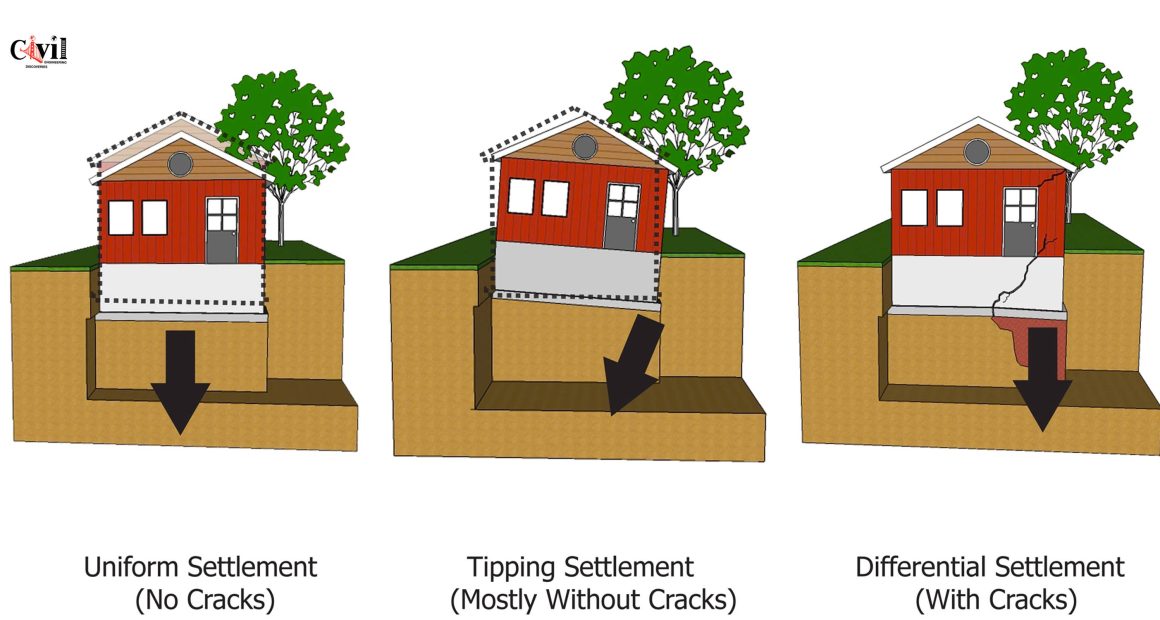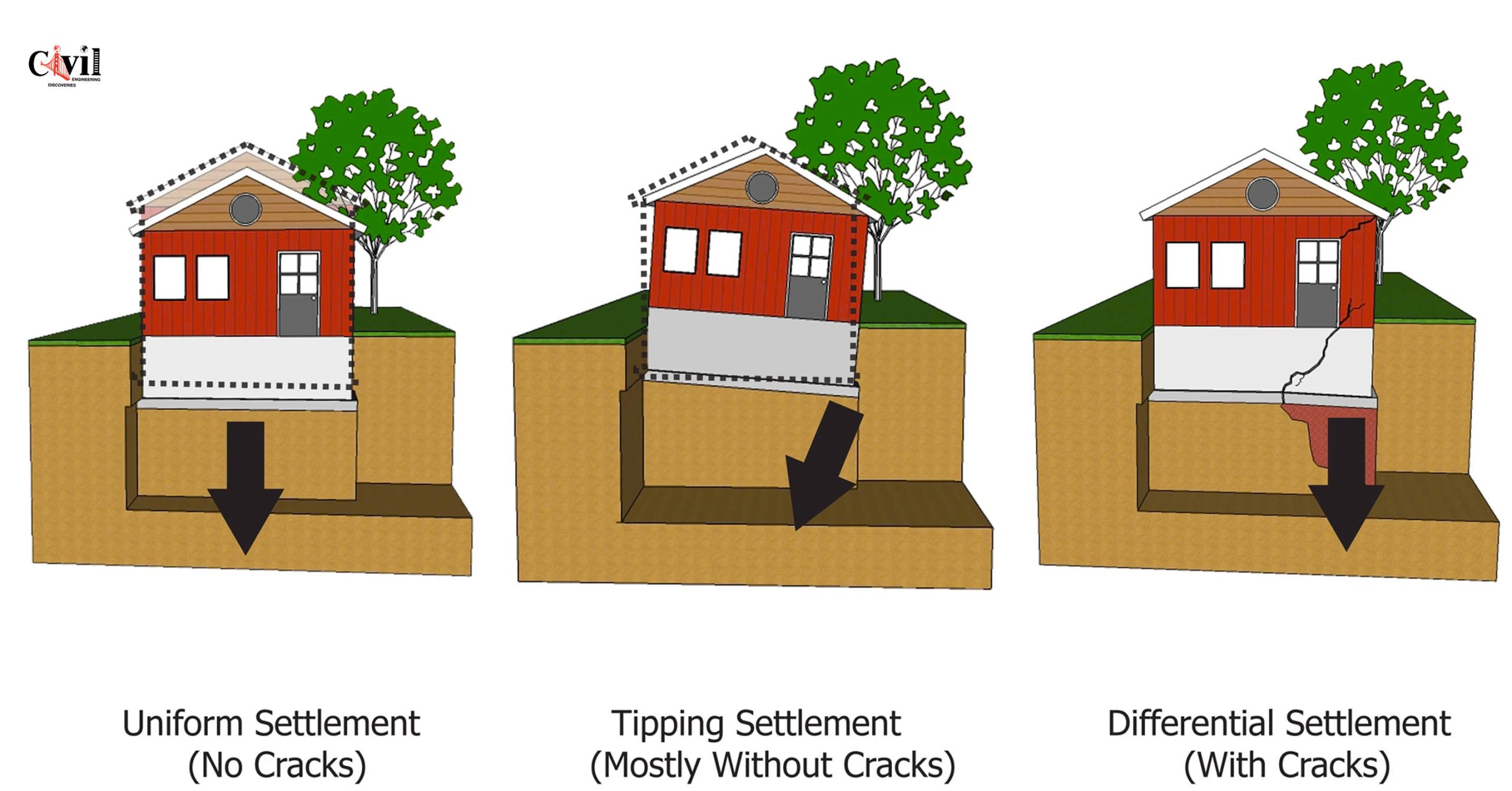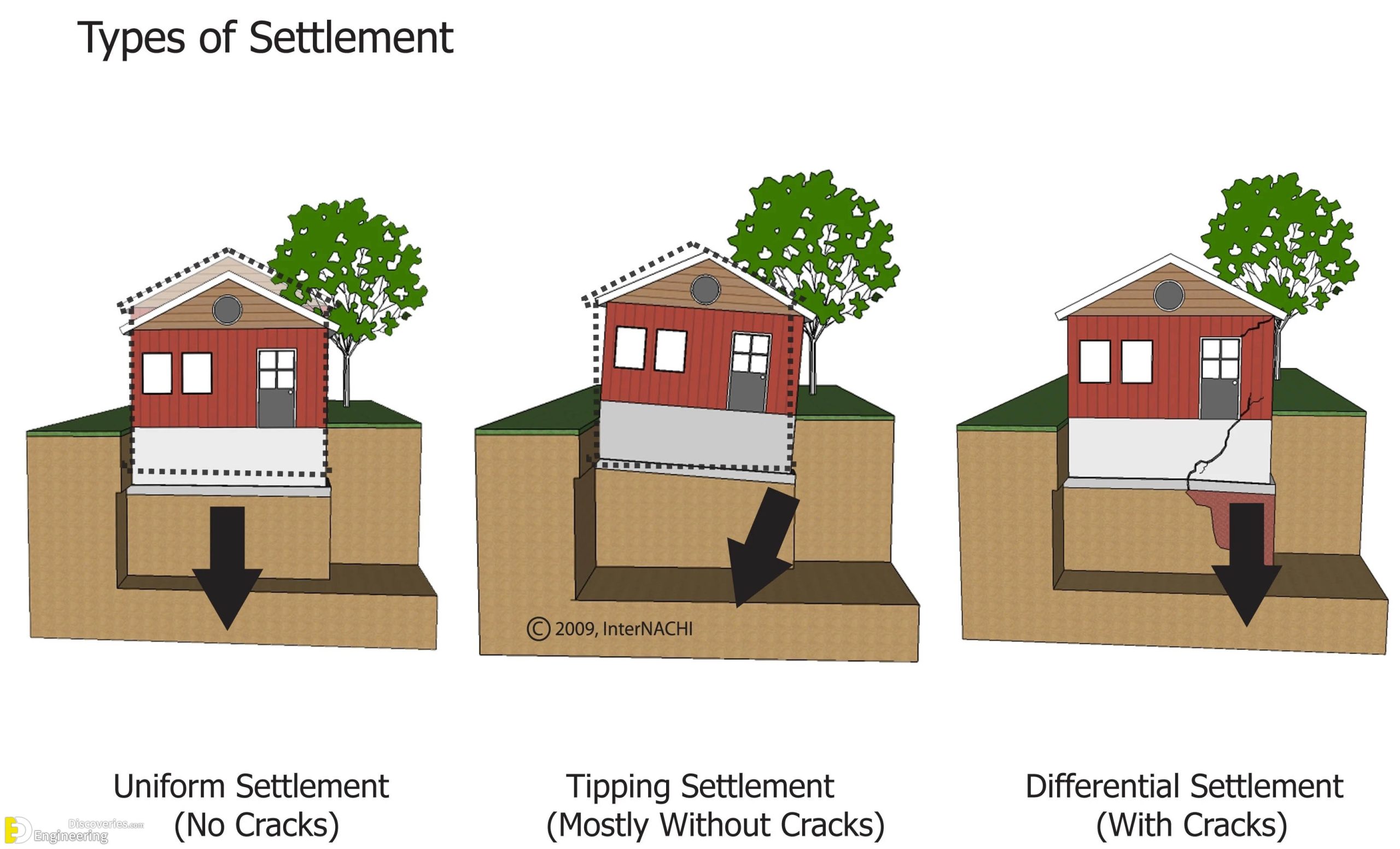Foundation Settlement refers to the downward movement of a building’s foundation into the soil or ground on which it rests. This process is natural and expected to some extent after construction, as the foundation and the structure above put a lot of pressure on the soil. However, settlement can progress beyond this point and cause foundation damage and structural instability in your home.
There are three main types of foundation settlement: uniform, tipping, and differential
Uniform settlement occurs when a building or structure settles at a uniform rate without the formation of cracks. This type of settlement is most common when the structure is built on the same layer of soil up to foundation depth and does not have any significant differences in soil composition.
Tipping settlement is characterized by one portion of a structure settling down to a certain depth. This type of settlement is extremely damaging and can cause the entire structure to collapse.
Differential settlement occurs when a structure is built on soil containing different layers. As such, different areas of the structure may settle differently, causing cracks to appear on different elements of the structure. In severe cases, differential settlement can lead to the collapse of an entire building.
Causes of Foundation Settlement:
- Soil Type: Loose or expansive soils, like clay, are more prone to settlement than dense or rocky soils.
- Moisture Changes: Fluctuating moisture levels in the soil can cause it to shrink or swell, leading to settlement.
- Poor Compaction: If the soil is not adequately compacted during construction, it can settle over time.
- Overloading: A structure that is too heavy for the foundation can cause it to sink.
- Nearby Construction: Activities like dewatering near a building can remove water from the soil and lead to settlement.
Prevention of Foundation Settlement:
- Soil Testing: Before construction, a geotechnical engineer should test the soil to determine its bearing capacity and identify any potential settlement risks.
- Proper Foundation Design: The foundation should be designed to account for the weight of the structure and the type of soil it will be built on.
- Compacting the Soil: The soil should be properly compacted to ensure it can adequately support the foundation.
- Drainage Systems: A proper drainage system can help to control moisture levels in the soil around the foundation.
- Maintaining a Stable Water Table: Maintaining a consistent water table level around the foundation can help to prevent settlement.
Click Here To See Which Column Is stronger? Circular vs Rectangular vs Square!!







